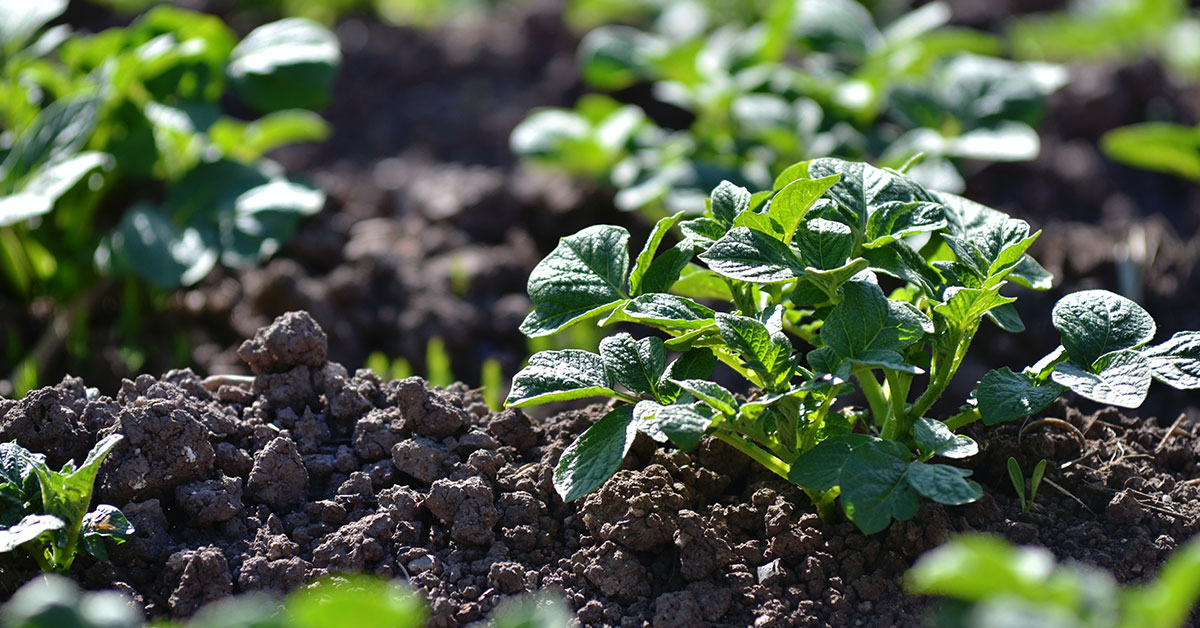Growing potatoes in zone 6 is a total breeze. The climate is perfect and the growing season is sufficient. Potatoes need a minimum of four months of frost-free weather in order to mature, so they are best planted in spring when temperatures are consistently above 50 degrees Fahrenheit. With the right care and attention, you can have a successful potato harvest in zone 6.
USDA Hardiness Zone 6 Climate
Climate Zone 6 is characterized by moderately cold winters and warm to hot summers. The average last frost date, when temperatures are consistently above freezing, is around April 21st. The average first frost date, when temperatures are consistently below freezing, is between October 31st.
Summers in Zone 6 are generally hot and humid with temperatures reaching up to the mid-90s (F). Winters can be cold, with temperatures often dipping down into the teens (F). Precipitation is fairly evenly distributed throughout the year, with an average of 40 inches of rain and snow annually.
The Best Seed Potatoes For Zone 6
When selecting seed potatoes for growing in zone 6 it is important to be mindful of the variety’s days to harvest and the length of time you have before you want to harvest them.
Early-season varieties such as ‘Yukon Gold’ and ‘Red Norland’ have fewer days to harvest and should be planted as soon as possible for harvesting in late summer.
Mid-season varieties such as ‘Russet Burbank’ and ‘Kennebec’ have more days to harvest and should be planted in late April or early May for harvesting in fall.
Late-season varieties such as ‘Cara Russet’ and ‘All Blue’ have the most days to harvest and should be planted in late April or early May for harvesting in early winter. Be sure to select varieties with the right number of days to harvest for your intended harvest date. Some good potato varieties for zone 6 include:
- Russet Potatoes: 85-95 days
- Yukon Gold Potatoes: 90-110 days
- Red Potatoes: 80-90 days
- Purple Potatoes: 90-110 days
- Fingerling Potatoes: 90-120 days
- Sweet Potatoes: 90-120 days
- White Potatoes: 90-100 days
- All-Blue Potatoes: 95-105 days
- Yellow Finn Potatoes: 85-95 days
- Kennebec Potatoes: 85-95 days
When To Plant Potatoes In Zone 6
In Zone 6, potatoes should be planted two weeks before the average last frost date of April 21st. This allows the potatoes to get established before the frost, giving them a head start on the growing season. Planting potatoes in Zone 6 should start around April 7th. Planting potatoes in Zone 6 too early can result in stunted growth and failure to thrive, as the cold soils can cause the potatoes to rot. However, planting potatoes too late can result in lower yields due to decreased growth time.
Shoot for approximately April 7th, but be mindful of the weather forecast. If it seems like cold weather is persisting later than usual, you may want to wait an extra few days.
How To Plant Potatoes In Zone 6
To plant seed potatoes, begin by preparing the soil for planting. This can be done by tilling the soil to a depth of approximately 8 inches and adding organic compost to the soil. Once the soil is ready, place the seed potatoes in a sunny location that receives at least 8 hours of direct sunlight.
The seed potatoes should be planted with the “eyes” facing up and should be spaced approximately 8 to 10 inches apart. Cover the seed potatoes with 3-4 inches of soil, and water them well. Once the potatoes begin to sprout, add more soil to the rows to ensure that the potatoes are well covered.
Water the potatoes regularly and keep the area free of weeds.
Caring For Potato Plants
Caring for potato plants is pretty easy – they’re incredibly hardy and generally no-fuss. Potato plants need full sun and well-drained soil to thrive. They should be watered deeply and regularly, allowing the soil to dry out between waterings.
Fertilizing is also important for optimal growth. Potato plants need a balanced fertilizer with equal parts nitrogen, phosphorus, and potassium. This should be applied every four to six weeks, depending on the soil’s nutrient content.
It is also important to keep the soil evenly moist, as potatoes do not tolerate dry or waterlogged conditions. Mulching around the potato plants can help retain moisture and reduce weeds.
When To Harvest Potatoes In Zone 6
There are two sure ways to know your potatoes are about ready to harvest! The first is counting backward from your current date to their planting date. Potato varieties have an approximate number of days to harvest, so consult the days to harvest for the particular variety of potatoes you’ve planted. If you aren’t sure, assume it’s around 100 days.
The appearance of your potato plants is another dead giveaway. You will know your potatoes are ready to harvest when the foliage begins to turn yellow and die back. Allow the soil around the plants to dry before harvesting, but don’t allow it to be dry for too long. Once harvested, inspect the potatoes carefully- they should be firm and free of green or soft spots.













